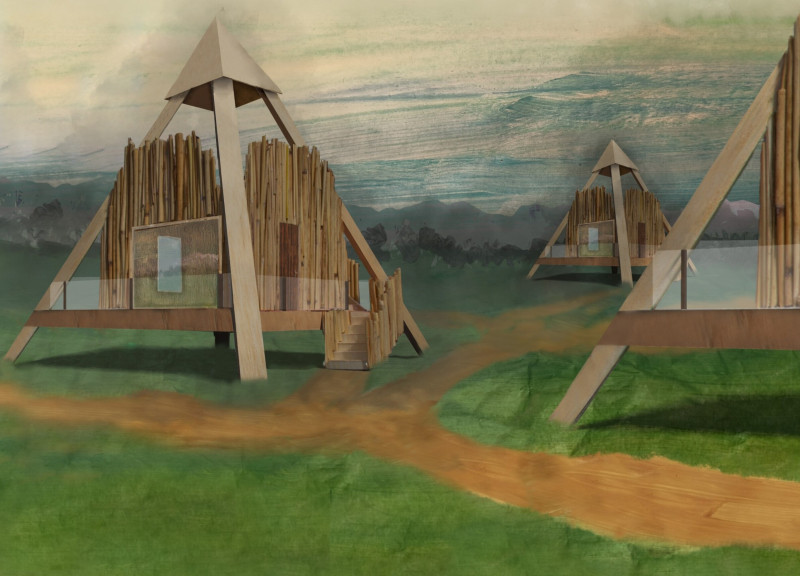5 key facts about this project
The Hag House is located in the calm surroundings of Carmel Shore, providing a unique living environment that merges nature with architecture. The residence is designed with cultural references, drawing from old Slavic legends. The overall design incorporates pyramid-like structures that create an interesting experience and highlight the connection between the building and its landscape.
Architectural Form
The design prominently features a collection of pyramidal shapes, including a wooden pyramid resembling an Egyptian tomb at the entrance. This distinctive form provides visual interest and carries cultural significance, grounding the design in a specific narrative. The arrangement of the structures supports movement and interaction among residents, allowing them to engage with both communal and private spaces.
Spatial Organization
The layout encourages a sense of community, while also protecting personal privacy. Paths connect individual units to shared areas, such as a sauna and a harbor along the river. This thoughtful arrangement fosters social interaction among residents, making it possible to enjoy communal living while still maintaining personal comfort and space.
Natural Light and Interior Atmosphere
Natural light is a key aspect of the design. Large windows open to views of the river, allowing sunlight to fill the interior. This design choice enhances the overall atmosphere and creates a warm environment. The play of light and shadow enriches the wooden interiors and helps link inhabitants to their surroundings.
Material Palette
The materials used in The Hag House contribute to its overall appearance. Notable elements include a wooden front door, glass balustrades, and finishes such as pine ceilings and wooden wall cladding. These selections create a harmonious relationship with the natural environment, ensuring that the structure looks appealing while remaining durable and functional.
Details such as the scattered stairways throughout the house provide dynamic transitions between levels. They also create intimate nooks, enhancing the way residents feel connected to their space in both community and personal contexts.






















































